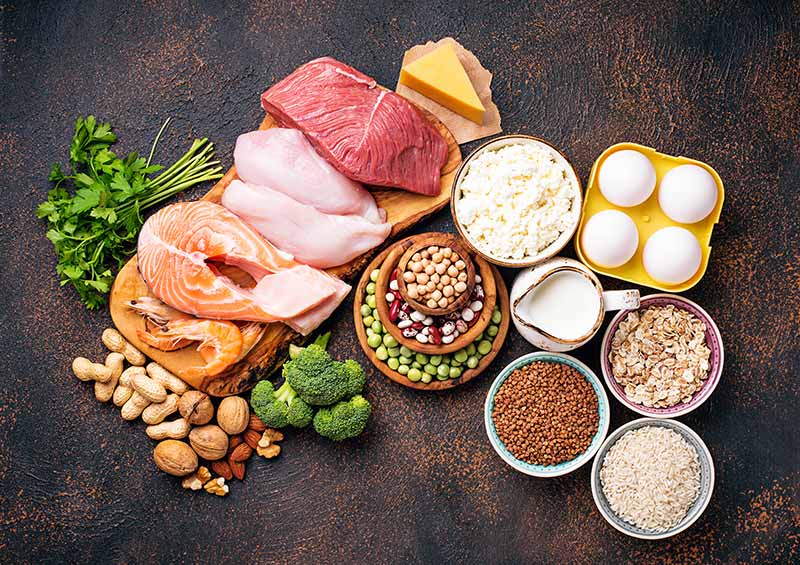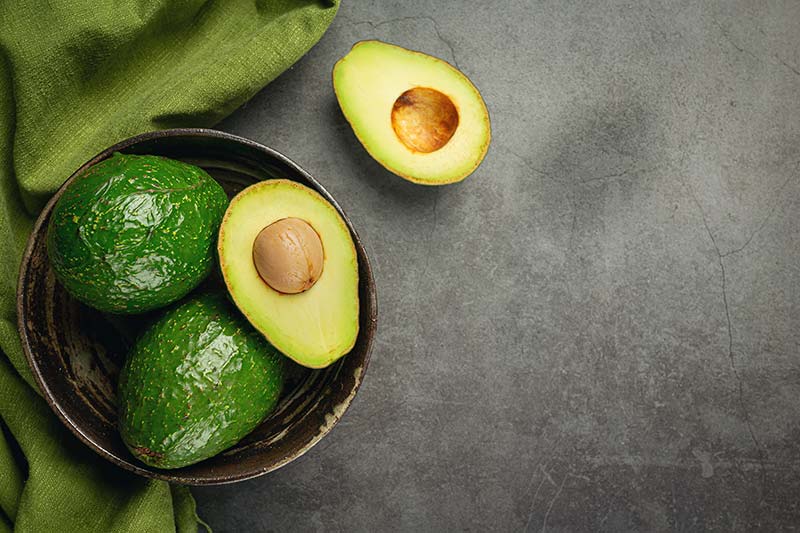When you’re heading into a cut, calculating your cutting macros is crucial for getting that extra edge. Learning how to strike the right balance in your diet will support your goals of cutting body fat and getting as lean as possible.
Instead of guessing your calorie intake during a cut, we’re going to show you how to calculate macros for cutting and maximize fat burn.
Counting calories vs cutting macros

When we talk about weight loss, the most common topic that continues to pop up time and time again is: Counting calories.
While this may be suitable for those just looking to shed a pound or two, during a serious cutting phase it’s more about changing your body composition – shedding fat while keeping muscle mass.
In order to maximize your efforts, you need to know how to calculate macros for cutting, opting for quality food over squeezing minimal food into your routine.
Unsure how to count macros for cutting? Here’s how! Simply follow these steps.
Work out your macros for cutting

In order to maximize your fat loss efforts, you need to know how to count macros for cutting.
Also Read: The best cutting diet (with a meal plan)
Thankfully, we’ve put together these quick steps for working out your cutting macros in no time.
Popular safe and legal steroid alternatives for cutting
1. Determine your calorie needs
Before working out your cutting macros, you need to determine how many calories you need each day in order to maintain your starting weight.
This is step one.
As a guide, men tend to need around 2000 to 3000 calories a day to maintain their weight. However, this can differ greatly according to age, gender and activity level. There are several calculators online to work out your calorie needs.
If you’re not sure how many calories you need, you can estimate your calorie needs by tracking your current intake. When you’re not sure how many calories you’re currently consuming, it can be tricky to find the best macros for cutting.
Spend some time getting familiar with tracking your calorie intake and current macros in order to determine your starting baseline.
How to create a calorie deficit

Once you know your current daily calorie intake, you can start to reduce this number in order to encourage weight loss.
This, as we all know, is a calorie deficit. Usually, this reduction is around 10 to 25% lower than your usual calorie intake. Let’s put an example out there:
- If you consume around 2500 calories daily to maintain weight, a 20% decrease (calorie deficit) would cut you down to 2000 daily calories.
In order to get to grips with your macros for cutting, you should also have an idea in mind as to how long you plan to cut for. The more body fat you’re trying to burn, the longer your cutting phase will be.
Most bodybuilders head into a cutting phase lasting anything between six and twelve weeks – a shorter amount of time won’t deliver optimum results, and any longer heightens your risk of diet fatigue.
If you do want to cut for a little longer, we’d recommend taking a break after 12 weeks before jumping back into another cut.
Phase into a cut

Although we’re telling you everything you need to know regarding how to calculate macros for cutting, if you’re not ready to dive in at the deep end you could consider a phased approach.
Also Read: The benefits of slow weight loss for cutting
This type of approach works well for newbie bodybuilders and those that are new to cutting their calorie intake. A slow and steady approach to cutting can also help ease you into the process, rather than leaving you feeling hungry from the get-go.
When you phase yourself into a cut, it’s important to cut your phase into blocks. For example, a 12 week cutting phase may be split into three 4-week time periods. As you move further into this cutting phase, gradually increase your calorie deficit from one phase to the next.
For example: Start with a 10% calorie deficit, before moving to 15% and then 20%.
Top tip: Be sure to recalculate your needs as your fitness level changes.
2. Work out your protein needs
As you’ll be well aware by now, your macros for cutting are split into three groups:
- Protein
- Fat
- Carbs
First, we’re going to talk about the importance of your protein intake when you calculate macros for cutting. According to research, a higher protein intake is crucial during a cutting phase.
There are two main reasons for this:
- In order to improve your body composition, a high protein diet is needed to protect lean muscle mass while cutting your calorie intake. This level of protein in your cutting macros also enables you to gain a small amount of muscle while cutting fat.
- During a cut, a drop in calories can leave you feeling hungry. Protein is incredibly satiating, meaning that you feel fuller for longer and aren’t quite so tempted to snack inbetween meals.
When it comes to bodybuilding cutting macros, protein is the most important macro to pay attention to. In order to calculate your protein cutting macros, you need to know your currency body composition.
Once you calculate how many pounds of lean mass you currently have, trying to calculate macros for cutting in terms of protein is far easier.
Top tip: Aim for at least 1 gram of protein per pound of lean body mass in order to maintain. According to research, you should be aiming for roughly 0.8 to 1.2 grams of protein per pound of body weight.
As an example: A guy weighing 200 pounds should aim for 160 to 240 grams of protein as part of his cutting macros daily.
Kickstarting a high protein diet

Much like cutting down your calories during a cut, diving headfirst into a high protein diet can also be tricky for some – especially if you’re not already getting a solid amount of protein.
In the same way as gradually increasing your calorie deficit, you can do the same for your cutting macros and protein intake. Gradually increasing your protein over time can help your body to adjust to these new levels.
To start, aim for a moderate amount of 0.8 to 0.85 grams or protein per pound of bodyweight. As you hit each phase of your diet, increase this amount. For example, a dude weighing 200 pounds could calculate his protein macros for cutting as follows:
- Weeks 1 to 4 – 160g of protein daily (0.80 grams/pound of body weight)
- Weeks 5 to 8 – 180 g of protein daily (0.90 grams/pound of body weight)
- Weeks 9 to 12 – 200g of protein daily (1.0 grams/pound of body weight)
3. Determine daily fat needs

When it comes to the best macros for cutting, figuring out your daily fat intake is crucial.
During standard dieting, fat levels are usually kept to a minimum, however, this isn’t always the case during a cut. When you’re already working out in a calorie deficit, consuming (the right type of) fat won’t make you fat.
Consuming the right type of fats is not only an essential part of your overall health, but it can also be the deal-breaker of sticking to your cutting macros. Since fat tends to add more flavor to foods, you’ll be less inclined to snack on sugary, processed foods when you feel fulfilled.
Furthermore, fat is a great source of long-lasting energy, with the right type of fat keeping you feeling full. Since carbs fill in the final gap when you calculate macros for cutting, the amount of fat you consume can be calculated according to your activity level.
Also Read: How does your body burn fat?
If you’re trying to work out how to count macros for cutting, be sure to take note of how active you are. Higher activity levels will result in a higher carb intake, meaning you can cut down fat as part of your cutting macros. Whereas those needing fewer carbs can increase their fat intake.
No, that doesn’t mean you can go shovelling down pizza, guys.
Let’s say you’re eating 2000 calories each day, the fat ratio of your cutting macros would look like this:
- 89 grams of fat per day if you are lightly active (2,000 x 40%)
- 67 grams of fat per day for moderately active (2,000 x 30%)
- 45 grams of fat per day if you are very active (2,000 x 20%)
4. Calculate daily carb needs

Finally, when you’re working out your cutting macros, you need to determine your carb intake.
Since you have already established your protein intake and your fat intake, carbs can pretty much fill the remainder. However, the number of carbs you consume can depend greatly on how much you’re exercising during your cut.
The more you exercise, the greater amount of carbs your body can utilize. Plus, the more muscle mass you have, the better your body can tolerate a higher amount of carbs. When you calculate macros for cutting, your fat needs can be based on activity level, assuming that your remaining calories are sufficient in meeting your basic carbohydrate needs.
How to calculate macros for cutting: Carbs
Here’s how to calculate your (carb) cutting macros – subtract your fat and protein calories from your total daily intake, using nine calories per gram of fat and four calories per gram for protein and carbs.
Here’s an example, based on a daily intake of 2000 calories:
- This would break down into 160 grams of protein
- 67 grams of fat
Therefore, your carb intake would go like this:
- 2,000 calories – 640 protein calories (160 grams x 4 calories/gram) – 603 fat calories (67 grams x 9 calories/gram) = 757 calories from carbs
- 757 calories/4 calories per gram = 190 grams of carbs a day
What should my macros be for cutting?

How regularly you work out can have an impact on your cutting macros, especially the amount of fat and carbs you consume.
This means that when you calculate macros for cutting, there is some leeway day to day – according to your exercise regime. Those switching up their carb intake in their cutting macros often refer to this as ‘carb cycling’.
However, as you are calculating your fat needs first, you can adjust your fat % day to day, with your carb intake simply falling into the gap.
For days when you’re lifting heavy weights or upping your intensity level, you can decrease your cutting macros in terms of fat intake – therefore increasing your carbs. On days where your training is on a moderate level or during rest periods, you can increase your fat intake, therefore cutting carbs for the day.
Let’s look at how to count macros for cutting, based on 2000 calories a day. This would equate to:
- 160 grams of protein (32% calories)
Therefore, your weekly breakdown would look like this:
- Heavy training and high-intensity training days = 32% protein, 20% fat, 48% carbs
- Moderate days = 32% protein, 30% fat, 38% carbs
- Rest days = 32% protein, 40% fat, 28% carbs
How to hit your cutting macros

Now that you know how to calculator macros for cutting, you need to create a cutting diet plan that is easy to stick to.
While fighting off hunger during a cut may feel tricky at first, if you prefer to phase in your cut, you’ll soon familiarize your body with your new cutting macros.
Knowing how to count macros for cutting is the first step to achieving a successful cut. Now the real work begins! Don’t be afraid to mix up your macros for cutting, according to your activity level and rest days.
Remember, we’re talking about healthy fats here, too. Not chowing down on takeouts! With plenty of ways to swap common foods to cut the calories, you’ll be lean in no time.
Need a way to maximize your cut? Once you know how to calculator macros for cutting, our 100% safe and legal cutting products can help you cut through fat like never before, protecting lean muscle mass and boosting your energy for maximum STRENGTH.
It’s time to get BRUTAL.
















